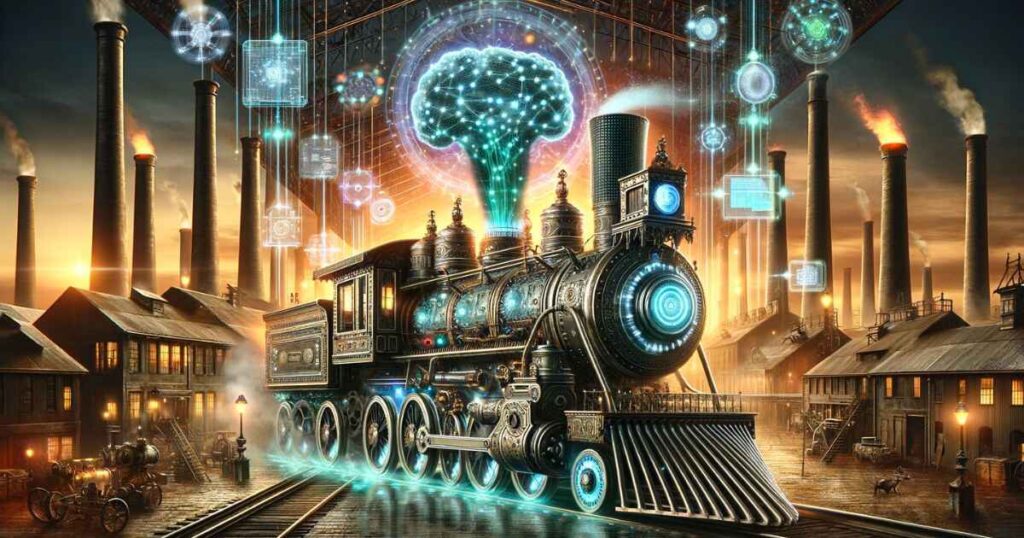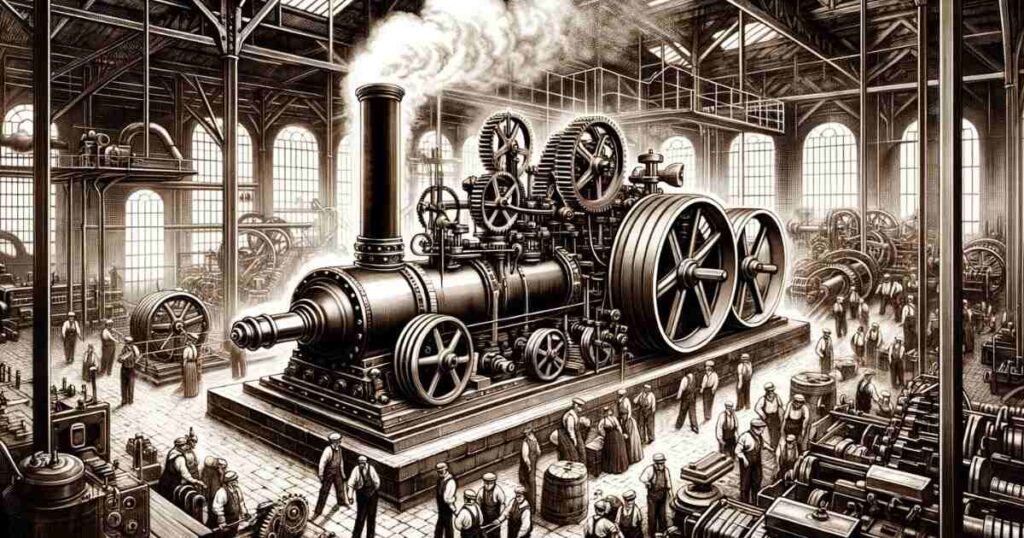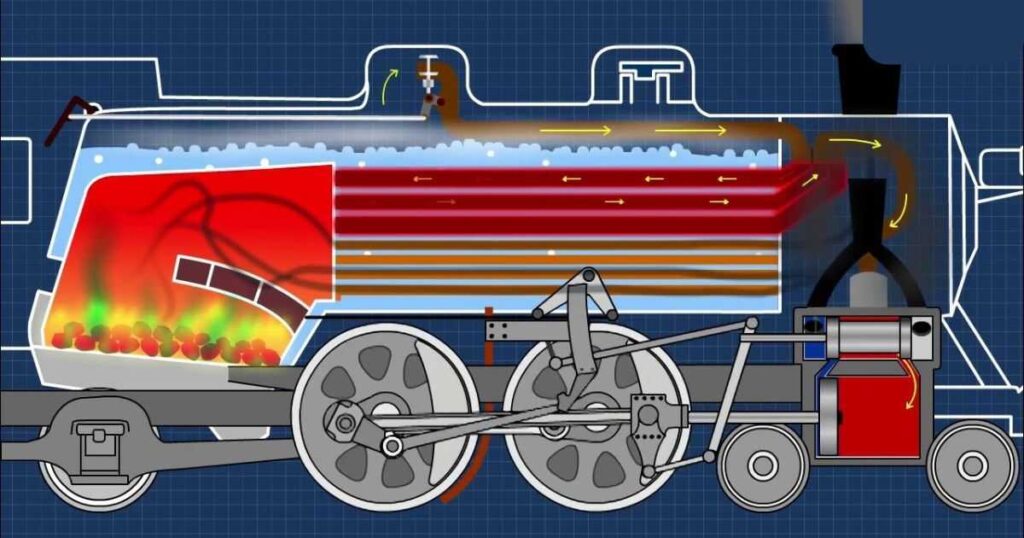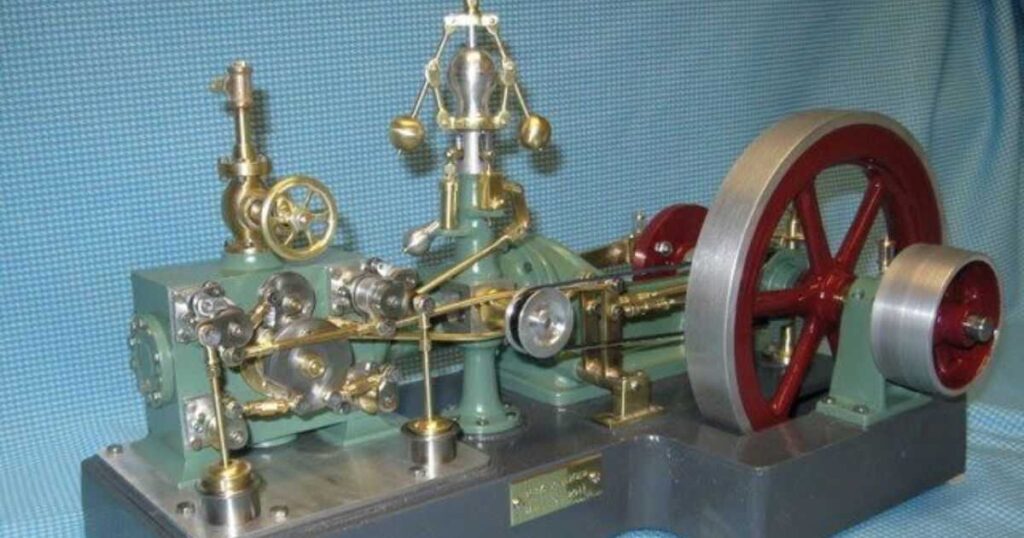A steam engine is a machine that uses steam to create motion. It converts heat energy into mechanical work efficiently. This technology was vital during the Industrial Revolution. It powered industries, trains, and factories worldwide.
The steam engine was more than just a machine; it sparked a technological revolution. Its invention changed how people worked, traveled, and produced goods. It showed the power of intellectual innovation in engineering. This breakthrough laid the groundwork for modern advancements.
Steam engines were once the backbone of industrial progress. They used steam pressure to power machines and vehicles. While no longer widely used, their design inspired today’s engines. This innovation reflects human creativity in solving big challenges.
Who Invented Steam Engine In 1786
The steam engine in 1786 was improved by James Watt, a Scottish engineer. He didn’t invent it but enhanced earlier designs by Thomas Newcomen. Watt’s innovation included a separate condenser, making steam engines more efficient.
This breakthrough reduced energy waste and transformed industries. His work revolutionized mining, manufacturing, and transportation. Watt’s contributions marked a turning point in the Industrial Revolution. His steam engine advancements set the stage for modern mechanical engineering.
Ai: The New Steam Engine Powering The Intellectual Revolution

Computer-based intelligence resembles the new steam engine within recent memory, driving scholarly unrest. It changes how we work, think, and make arrangements. As steam engine-fueled enterprises, simulated intelligence powers developed in each field.
Don’t miss to read out this blog: Can I Invest Viziv Technologie
From computerizing undertakings to taking care of perplexing issues, its effect is immense. Artificial intelligence speeds up progress, making processes more intelligent and quicker. This innovation shapes the future, similarly to the steam engine formed in the past. It represents human inventiveness, powering vast opportunities for development and disclosure.
The Steam Engine As The Spark Of The Industrial Revolution
The steam engine was the main thrust of the Modern Unrest. It fueled processing plants, trains, and ships, changing enterprises around the world. By changing over steam into mechanical energy, it helped efficiency more than ever. This development made large-scale manufacturing conceivable and quicker.
It associated urban areas through rail lines and reformed exchange and transport. The steam motor represented human inventiveness and modern advancement. Its heritage remains a defining moment ever, forming the cutting-edge world we know today.
Key Features Of Early Steam Engines
Early steam engines were basic at this point strong machines. They utilized steam strain to drive cylinders and make movement. Their plan denoted the start of current modern power.
- Controlled by bubbling water to deliver steam.
- Utilized cylinders to change steam into mechanical work.
- Intended to siphon water out of mines and lift efficiency.
Impact Of Steam Technology On Industry

Steam technology changed the industry by expanding productivity and creation speed. It empowered huge scope fabricating and reshaped worldwide exchange. The effect of steam power was felt across manufacturing plants, and transportation, and that’s only the tip of the iceberg.
- Expanded plant creation limit.
- Further developed transportation with steam-fueled trains and ships.
- Invigorated financial development by upgrading exchange and trade.
Innovations Fueled By Steam Power
Steam power-filled endless developments, driving modern development and technological progressions. It prepared for quicker transportation and proficient creation strategies. The steam motor’s effect is as yet found in present-day hardware.
- Railroads extended, associating areas and helping economies.
- Steamships reformed worldwide exchange and travel.
- Processing plants filled in size and proficiency, expanding creation limit.
Legacy Of Steam Engines In Today’s Machines
The tradition of steam motors lives on in current machines, impacting innovation today. Their standards of changing energy over completely to movement are as yet utilized in different fields. Steam motors established the groundwork for more productive power sources.
- Current motors are quicker and more minimal than steam motors.
- Steam power roused the advancement of motors in vehicles and planes.
- The center thought of saddling energy to drive machines stays unaltered.
Are Steam Engine Intellectual Technology Essay
The steam engine is a perfect representation of scholarly innovation. Changing intensity into mechanical power, changing ventures forever was planned. This development controlled trains, processing plants, and ships, making transportation and creation quicker.
The thought behind the steam engine displayed human imagination and critical thinking. Albeit present-day motors have supplanted it, its effect is obvious. It established the groundwork for future innovative forward leaps. The steam motor’s scholarly plan keeps on moving designers today.
What Purpose Does The Steam Engine Serve

The steam engine served an essential job in controlling machines, vehicles, and production lines. It utilized steam to make mechanical energy for transportation, similar to trains and ships. The motor empowered an enormous scope of modern creation, driving production lines and plants.
People Also Read This Blog: Is Hardware Technology Important For Cybersecurity
It likewise further developed productivity in agribusiness and mining. Steam power changed worldwide exchange and correspondence. Supplanting physical work, helped efficiency. Its heritage stays in the advancement of current motors and hardware.
Steam Engine Industrial Revolution
The steam engine assumed a critical part in the Modern Upset. It fueled manufacturing plants, trains, and ships, supporting efficiency. With steam, enterprises could work quicker and all the more proficiently.
This advancement prompted large-scale manufacturing and new transportation techniques. It assisted urban communities with developing and economic growth. The steam engine changed work, making it less reliant upon difficult work. Its effect is as yet felt today in present-day advances.
How Has The Steam Engine Impacted Society Today
The steam engine lastingly affects society. It altered ventures by empowering large-scale manufacturing and effective transportation. Rail routes and production lines developed quickly because of steam power. This shift prompted urbanization and meaningfully impacted how individuals worked.
The steam engine started further mechanical advances, making it ready for present-day motors. Its impact should be visible in all that from autos to control plants. Its heritage is a foundation of the modern and mechanical world we live in at this point.
Evolution Of Steam Engines In Technology
The development of the steam engine upset innovation over hundreds of years. Early models, such as Newcomen Thomas’, were basic and wasteful. James Watt worked on the plan, making motors all the more remarkable and down to earth. This advancement fueled the Modern Upset, changing manufacturing plants and transportation.
Steam engines became fundamental for trains, ships, and assembling. In the long haul, they were supplanted by additional productive motors like inside ignition. The steam motor’s job in forming present-day innovation stays unquestionable.
Intellectual Advancements Through Steam Power

Steam power prompted significant scholarly progress in design. It gave a better approach to bridle energy for machines and transportation. The creation of the steam engine prodded advancements in processing plants, mining, and transportation frameworks.
It permitted businesses to increase creation and further develop productivity. This change in innovation made it ready for the current apparatus. Steam power roused new fields of concentrate in thermodynamics and mechanical design. It assumed a pivotal part in molding the mechanical scene we have today.
How Steam Engines Shaped Modern Innovations
Steam engines assumed a critical part in molding current developments. They fueled plants, trains, and ships, changing transportation and assembling. This leading edge prompted quicker creation and worldwide exchange.
Steam engines established the groundwork for interior ignition and electric motors. Their advancement started novel thoughts in mechanical design. The present innovation, from cars to control plants, owes a lot to the steam motor. It demonstrated the way that one development can rouse vast headways in different fields.
Conclusion
The steam engine is a noteworthy illustration of scholarly innovation. It changed nuclear power into mechanical power, driving modern advancement. This development established the groundwork for present-day designing and machines. Its effect molded ventures, transportation, and assembling internationally.
HSupplanted by cutting-edge innovations, the steam motor’s heritage perseveres as an image of human resourcefulness. It stays an achievement throughout mechanical progressions, displaying how imaginative thoughts can reform the world and rouse future turns of events.
FAQ’s
What Kind Of Innovation Is A Steam Motor?
A steam motor is a mechanical innovation that utilizes steam to move.
What Classification Is A Steam Motor?
It falls under heat motors, changing nuclear power into mechanical work.
Is The Steam Motor An Advancement?
Indeed, it was a notable development that reformed transportation and industry.
What Was The Meaning Of The Steam Motor?
The steam motor controlled the Modern Insurgency, empowering large-scale manufacturing and current transportation.
What Is Steam In Innovation?
In innovation, steam is a high-pressure energy source to drive hardware.
For What Reason Don’t We Utilize Steam Motors Any Longer?
Steam motors were supplanted by more productive and minimized inside burning and electric motors.








